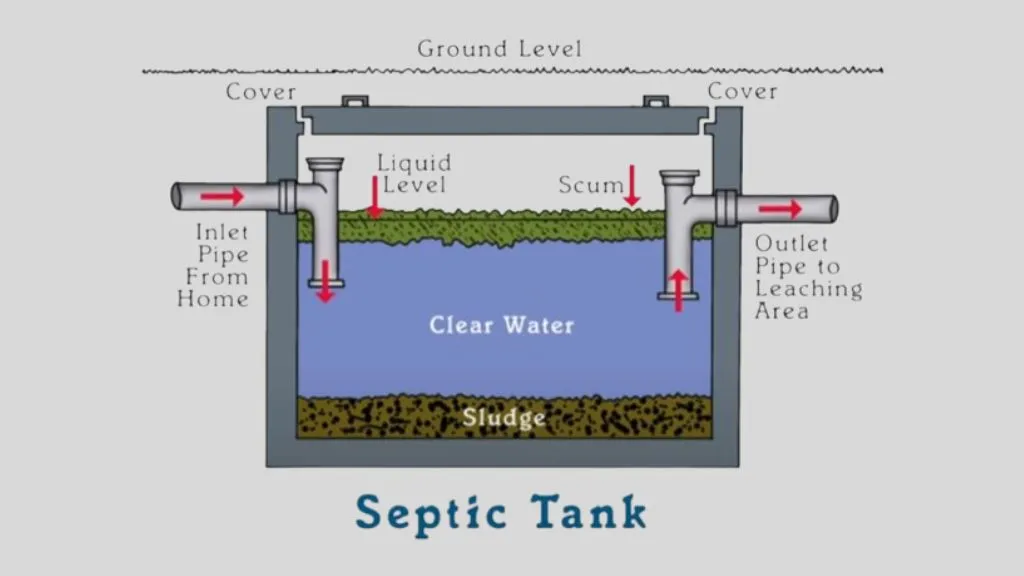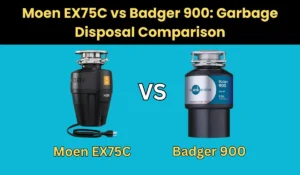How to Calculate the Right Septic Tank Size for Your Home
If you’re building or upgrading a home in an area without a municipal sewage system, one of the first questions that will arise is how big your septic tank should be.
It may seem like a minor detail, but accurately sizing your septic tank can make the difference between a system that operates at peak efficiency for years — or one that quickly fails and causes messy backups and costly headaches.
In our homeowner’s guide, we’re going to tell you everything you need to know so that you can figure out the ideal size for your septic tank at home. We’ve got the basics of a septic tank rundown, family size, water usage and even the step-by-step methods to help you size a septic tank.
The Basics of Septic Tanks
Household wastewater is treated by a septic tank, an underground, watertight container. If you don’t hook into a public sewer, this is a vital component of your waste treatment. Here’s how it works in practice:
How a septic tank Works

The process starts when all the water from your house — which includes everything that goes down the toilet, runs in the sink, pours in the shower and cycles in the washing machine — enters the septic tank. Natural bacteria inside the tank begin breaking down the solid waste, and in the process separating it from the liquid. The solids end up at the bottom, and the liquid flows up top.
When the solids are decomposed, the effluent is discharged into a drain field. It is then filtered through the soil and treated in the leach field before it flows to the underground water. This naturally filtering the waste by ensuring it is treated before it’s dumped back in the environment.
Key Parts of a Septic System:
- The Tank: The biggest part of the system, where waste decomposes and settles.
- Pipes: Wastewater enters the septic tank through these pipes and the treated liquid flows out to the drain field.
- Drain Field: The underground portion of the system that allows the treated liquid waste to be absorbed into the ground, finishing the treatment process.
What to consider when choosing the size of your septic tank
A number of factors determine the volume of wastewater your home generates and how your septic system should be sized:
- Size of your household: The higher the headcount, the greater the volume of wastewater your system must manage. A person produces 150-200 liter of wastewater per day.
- Soil Type: Whether your soil is sandy, loam or clay can affect system performance. The soil must be permeable enough for the treated water to drain through for the system to work. Sandy soil is best because it drains well, while clay soil holds water, which makes it more difficult for the system to work as efficiently.
- Location of Tank: All of this must be considered in reference to where you actual septic system is. Just make sure that you put it in a location that is free from blockages such as tree roots, which could ruin your system and cause you problems later.
Septic Tank Sizing Standards Around the World
Although the principles of operation behind a septic tank are pretty much the same wherever a person goes, the fact is that the actual sizing parameters can differ significantly depending on your own location. Various countries — and, sometimes, even regions within a country — have their own rules in place to ensure that septic systems are safe, efficient and environmentally friendly.
A quick overview of how some countries size septic tanks:
🇺🇸 United States
In the United States, most septic tank size is based on the number of bedrooms in a house. That’s because bedrooms are a proxy for how many people might live in the house. Most states require:
- Minimum of 1,000 gallons for homes with up to 3 bedrooms
- Add 250 gallons for each additional bedroom
States or counties might also factor in the amount of water used, the number of bathrooms or if high-use appliances (such as garbage disposals) are installed.
🇬🇧 United Kingdom
In the UK, the methodology used for sizing is a little different. It is based on the number of people that the home can accommodate, not just the bedrooms. A common method used is:
- 150 litres per person per day, plus an additional 2,000 litres buffer
This treatment sizing approach is harmonized with recommendations given by Environment agency in their requirement to meet the general binding rules.
🇦🇺 Australia
Regulations in Australia are commonly imposed at the state or local council level. As is the case in the UK, the system frequently takes into account:
- Expected water usage
- Number of occupants
- Fixture ratings (e.g., low-flow toilets and showers)
A number of councils use a guideline of around 150 litres per person per day, along with bottom line requirements for tank sizes and effluent absorption areas.
Step-by-Step Guide to Calculating Your Septic Tank Size
When it comes to keeping your wastewater system running smoothly, selecting the right septic tank size is important. If your tank is undersized, you might have backups into your home. Conversely, if it’s too large, you could be wasting money on capacity you don’t need. To determine the size of the septic tank required by the household of a family of four, all we need to know is the hepatic tank equation as we stated above and that is 2700 to 3000 litres.
Step 1: Estimate Daily Water Usage
First, let’s figure out how much water a household of 5 people uses in a day. Here’s the breakdown:
- Cooking: 5 liters per day
- Bathing & Toilet: 85 liters per person. For 5 people, that’s 425 liters per day
- Washing Clothes & Dishes: 30 liters per day
- House Cleaning: 10 liters per day
- Other Uses: 5 liters per day
Thus, amount of water used everyday by this family is: 475 liters/day.
Step 2: Apply a Detention Period
Next, we want to determine how long it might be before the wastewater is processed after it enters the septic tank. For us usually it is a deten tion period of 3 days. This would tend to imply that the tank size should be for 3 days of storage.
Total potential wastewater generation in 3 days of that household shall be:
475 liters/day × 3 days = 1,425 liters.
Step 3: Add Buffer Capacity
You have to consider the accumulation of sludge, the disgusting waste that solidifies at the bottom of the tank.) The tank fills with sludge at an average accumulation rate of about 30 liters per person per year.
For a household of 5 people:
Sludge buildup for 2 years = 30 liters × 5 people × 2 years = 300 liters.
Now, add this sludge buffer to the initial estimate:
1,425 liters (wastewater) + 300 liters (sludge) = 1,725 liters.
To be safe, it’s a good idea to round up. So, we’ll choose a minimum tank size of 2,000 liters.
Step 4: Calculate the Size and Dimensions
Now, let’s figure out the size and dimensions of the septic tank. We know the total capacity should be 2,000 liters.
- The depth of the tank should be at least 1.8 meters, and we add a 300mm freeboard for extra space, making the total depth 2.1 meters.
Now, to calculate the area:
Volume = 2,000 liters = 2 cubic meters (since 1,000 liters equals 1 cubic meter).
To find the area, we divide the volume by the depth:
Area = 2 ÷ 1.8 = 1.2 square meters.
For the shape, we’ll use a 4:1 length-to-breadth ratio. This means the tank will be longer than it is wide.
- Breadth (B): 0.54 meters (minimum)
- Length (L): 4 × 0.54 = 2.16 meters
So, the tank’s dimensions would be:
- Length: 3 meters
- Breadth: 0.75 meters
- Depth: 2.1 meters (including freeboard)
Step 5: British Standard Calculation
Finally, let’s use the British Standard formula to double-check our septic tank size.
The formula is: C=A+P×(rq+ns)
Where:
- C = Tank capacity in liters
- P = Number of people
- A = 2,000 liters (constant)
- r = Detention period (days)
- q = Sewage flow per day (liters)
- n = Number of years (for sludge buildup)
- s = Sludge accumulation per person per year
For simplicity, we can use (rq + ns) = 180 liters per person.
So, for a 5-person household: C=2,000+(180×5)=2,900liters
This shows that a septic tank of 2,900 liters would be ideal for a 5-person household.
By following these steps, you can determine the right septic tank size for your home.
Benefits of Choosing the Right Septic Tank Size
Choosing the best septic tank size isn’t just about getting it to fit in your backyard — you need to make a wise investment for your home and the local ecosystem. Here’s what makes getting the size right so important:
1. Efficient Waste Management
Having a septic tank that is the proper size for your home means that it can accommodate your wastewater appropriately. That way the waste gets properly broken down and processed, which may help avoid things like:
- Backups, during which sewage could flow into your home or yard.
- Overflows, and that can mean expensive fixes and big messes.
- Health hazards, such contaminated water, or foul odors.
2. Cost Savings
The right size septic tank can save you money down the road. Here’s how:
- Pumping less often: Because your tank can process the waste more efficiently, you have to pump it less frequently.
- Sidestep costly repairs: A correctly sized tank can help keep repairs at bay, such as damage to your drain field or ineffective waste treatment.
3. Environmental Protection
A well-sized septic tank isn’t only good for your wallet — it’s good for the environment, too. A properly cared for tank is a means of prevention:
- Groundwater: By preventing untreated water from seeping into the ground.
- Local habitats: If your tank is too small or doesn’t function properly, it can pose environmental risks to nearby streams, lakes or potentially even your backyard.
Conclusion
Key to upholding a proper functioning wastewater system over time is selecting the right size septic tank. By determining the proper size based on factors such as the number of people in your household, your water use and the soil type on your property, you can steer clear of issues such as backups, overflows and costly repairs. If you don’t have the correct size of tank for your needs, then your waste won’t be treated as intended, leading to lost time and money, and increased frustration.
Having the proper size septic tank also protects the environment because it prevents untreated sewage from seeping into the groundwater and local environment. Whether you are building a new home or replacing an old system, using this guide will help make sure your septic system will work well for years, and you’ll keep your home and the environment safe and healthy.
Further Reading:
What Is a Septic Tank and How Does It Work? (Full Guide)
The Author

I’m Muhammad Nabeel Dar, an employee in waste management and the owner of Garbage Waste Disposal with more than four years of experience helping people to control waste and garbage disposals are the best tools to control it. Read more







